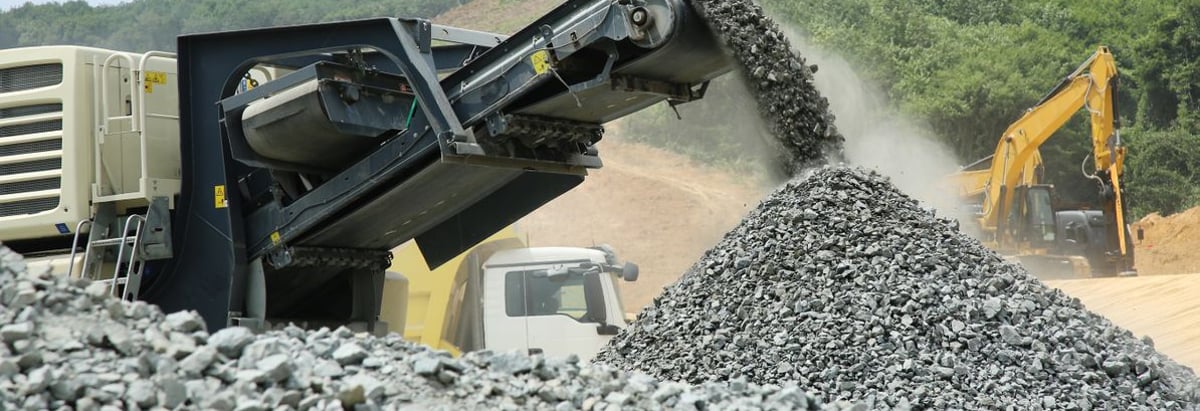Stock Analysis
- Saudi Arabia
- /
- Basic Materials
- /
- SASE:3020
Returns At Yamama Saudi Cement (TADAWUL:3020) Are On The Way Up

Finding a business that has the potential to grow substantially is not easy, but it is possible if we look at a few key financial metrics. Ideally, a business will show two trends; firstly a growing return on capital employed (ROCE) and secondly, an increasing amount of capital employed. Put simply, these types of businesses are compounding machines, meaning they are continually reinvesting their earnings at ever-higher rates of return. Speaking of which, we noticed some great changes in Yamama Saudi Cement's (TADAWUL:3020) returns on capital, so let's have a look.
Return On Capital Employed (ROCE): What Is It?
Just to clarify if you're unsure, ROCE is a metric for evaluating how much pre-tax income (in percentage terms) a company earns on the capital invested in its business. To calculate this metric for Yamama Saudi Cement, this is the formula:
Return on Capital Employed = Earnings Before Interest and Tax (EBIT) ÷ (Total Assets - Current Liabilities)
0.046 = ر.س264m ÷ (ر.س6.7b - ر.س998m) (Based on the trailing twelve months to March 2024).
Thus, Yamama Saudi Cement has an ROCE of 4.6%. On its own that's a low return on capital but it's in line with the industry's average returns of 4.7%.
View our latest analysis for Yamama Saudi Cement
Above you can see how the current ROCE for Yamama Saudi Cement compares to its prior returns on capital, but there's only so much you can tell from the past. If you'd like to see what analysts are forecasting going forward, you should check out our free analyst report for Yamama Saudi Cement .
What Does the ROCE Trend For Yamama Saudi Cement Tell Us?
While there are companies with higher returns on capital out there, we still find the trend at Yamama Saudi Cement promising. More specifically, while the company has kept capital employed relatively flat over the last five years, the ROCE has climbed 1,157% in that same time. Basically the business is generating higher returns from the same amount of capital and that is proof that there are improvements in the company's efficiencies. The company is doing well in that sense, and it's worth investigating what the management team has planned for long term growth prospects.
For the record though, there was a noticeable increase in the company's current liabilities over the period, so we would attribute some of the ROCE growth to that. The current liabilities has increased to 15% of total assets, so the business is now more funded by the likes of its suppliers or short-term creditors. Keep an eye out for future increases because when the ratio of current liabilities to total assets gets particularly high, this can introduce some new risks for the business.
The Key Takeaway
As discussed above, Yamama Saudi Cement appears to be getting more proficient at generating returns since capital employed has remained flat but earnings (before interest and tax) are up. Since the stock has returned a solid 83% to shareholders over the last five years, it's fair to say investors are beginning to recognize these changes. Therefore, we think it would be worth your time to check if these trends are going to continue.
If you want to continue researching Yamama Saudi Cement, you might be interested to know about the 1 warning sign that our analysis has discovered.
While Yamama Saudi Cement isn't earning the highest return, check out this free list of companies that are earning high returns on equity with solid balance sheets.
New: Manage All Your Stock Portfolios in One Place
We've created the ultimate portfolio companion for stock investors, and it's free.
• Connect an unlimited number of Portfolios and see your total in one currency
• Be alerted to new Warning Signs or Risks via email or mobile
• Track the Fair Value of your stocks
Have feedback on this article? Concerned about the content? Get in touch with us directly. Alternatively, email editorial-team (at) simplywallst.com.
This article by Simply Wall St is general in nature. We provide commentary based on historical data and analyst forecasts only using an unbiased methodology and our articles are not intended to be financial advice. It does not constitute a recommendation to buy or sell any stock, and does not take account of your objectives, or your financial situation. We aim to bring you long-term focused analysis driven by fundamental data. Note that our analysis may not factor in the latest price-sensitive company announcements or qualitative material. Simply Wall St has no position in any stocks mentioned.
Have feedback on this article? Concerned about the content? Get in touch with us directly. Alternatively, email editorial-team@simplywallst.com
About SASE:3020
Yamama Saudi Cement
Engages in manufacture, production, and trading of cement, and its related accessories, derivatives, and components in Saudi Arabia.

